They look like they have been dipped in bright paint; did you know that? People love these cute animals and want to buy them as pets. One name for them is the Blue Florida Crayfish. Another name is the Sapphire Crayfish. But the name of the species, Procambarus alleni, also has a story. In Latin, “Procambarus” means “before the chamber,” which refers to the shape of their bodies. It is called “Alleni” to remember the person who found them first.
Table of Contents
This bright blue animal lives in the wild in the streams and ponds of Florida. They like to stay at the bottom and hide under rocks or plants. They will eat plants, small fish, and even food that has already been eaten.
What a cool fact! These crabs can grow back their missing limbs! They can grow a new leg over time if one gets hurt. It is like having a fix kit built right in!
They are very interesting to scientists. The Journal of Crustacean Biology looks at how they live and grow. We can learn more about sea life and how to keep our lakes and rivers healthy this way.
The crayfish in this picture are in the same family as many other crabs that live in North America. They are linked to lobsters and shrimp, but they like living in fresh water.
Here are some interesting facts about these pretty blue fish:
They live for about three to four years and can get up to six to eight inches long.
These birds can lay up to 500 eggs at once.
A lot of people keep these crayfish as pets because they are cute and smart. Their tanks are fun to watch because they like to move around and look around.
These crayfish are very important to their homes in the wild. As they eat dead animals and plants, they help clean up. This keeps the water clean for other living things.
You will understand why these crayfish are so unique if you ever get the chance to see one. Their bright blue color will catch your eye and make you wonder about the cool animals that live in our water.
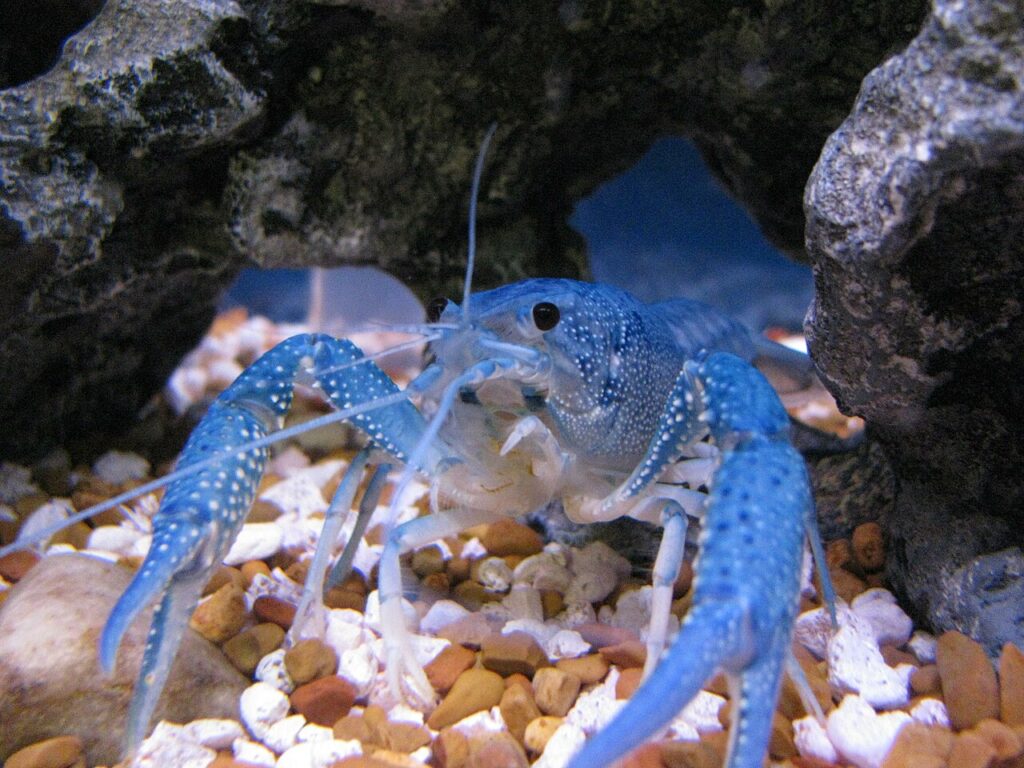
Electric Blue Crayfish Key Information
The Electric Blue Crayfish, a stunning freshwater crustacean, captivates aquarium enthusiasts with its vibrant hue. This eye-catching creature boasts a brilliant blue coloration that ranges from a soft sky blue to a deep, electric sapphire. The intensity of their color can vary based on factors like diet, stress levels, and age. Some individuals may display subtle hints of purple or turquoise, adding to their allure. Their exoskeleton often has a slight iridescent quality, making them shimmer under aquarium lights.
Here’s a comprehensive table detailing various aspects of the Electric Blue Crayfish:
| Family | Cambaridae |
| Origin | Florida, United States |
| Price | $15 – $30 |
| Common Names | Blue Florida Crayfish, Sapphire Crayfish, Blue Crayfish |
| Variants | Wild-type brown, albino (rare) |
| Ideal Tank Size | 20 gallons or larger |
| Water Parameters | pH: 6.5-7.5, Temperature: 68-75°F (20-24°C) |
| Lifespan | 3-4 years |
| Full Size | 4-6 inches |
| Natural Environment | Slow-moving streams, ponds, and swamps |
| Behavior | Active, curious, can be territorial |
| Habitat Preference | Bottom-dweller, enjoys hiding spots |
| Aquarium Decoration | Rocks, driftwood, plants, caves |
| Ideal Tank Mates | Fast-swimming fish, other peaceful bottom-dwellers |
| Fish to Avoid | Small or slow-moving fish, shrimp |
| Best Foods/Diet | Omnivorous – algae wafers, vegetables, small fish, pellets |
| Disease | Prone to fungal infections if water quality is poor |
| Sex-switch | No sex-switching ability |
| Gender Differences | Males have larger claws, females have wider tails |
| Care Level | Beginner to intermediate |
| Breeding Level | Intermediate |
Ideal Tank Mates for Electric Blue Crayfish
It’s important to think about the Electric Blue Crayfish’s behavior and habitat choices when choosing tank mates for it. These colorful crustaceans live on the bottom of the tank and can be territorial, so it’s important to pair them up with fish that get along with them. Tank mates should be peaceful, fast swimmers, and ideally live in different parts of the tank.
Here’s a list of 10 compatible tank mates, each offering unique characteristics that make them suitable companions for the Electric Blue Crayfish:
1. Bristlenose Pleco
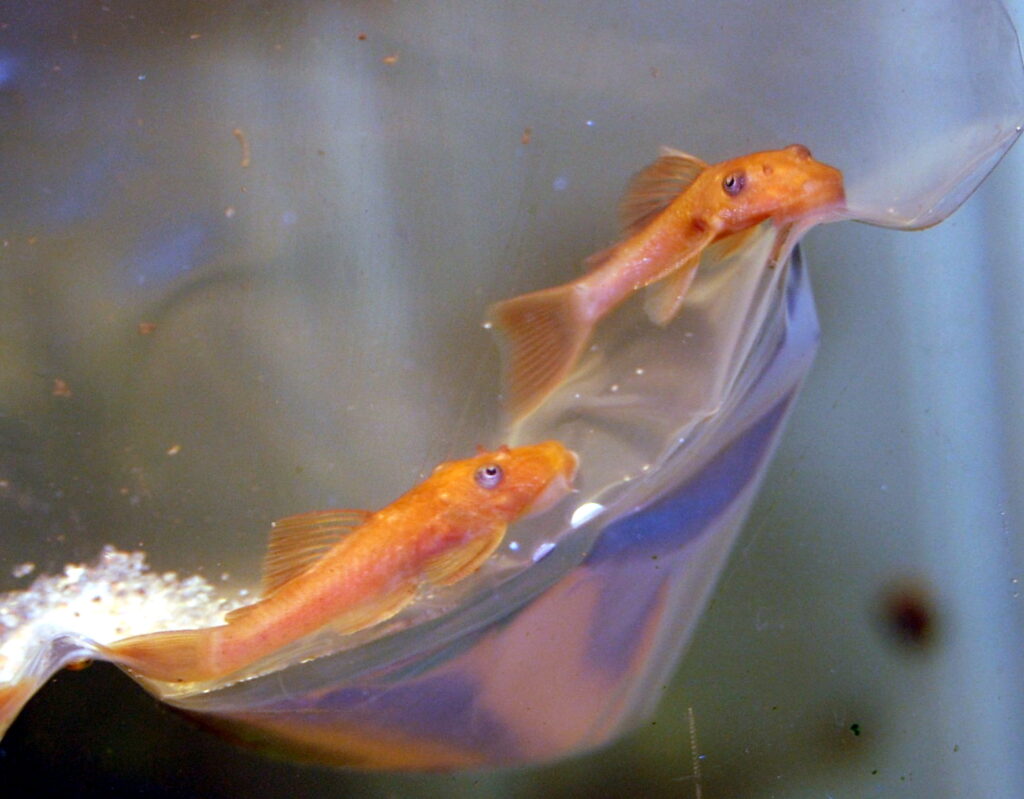
Bristlenose Plecos are excellent tank mates due to their peaceful nature and shared love for bottom-dwelling. They’re unlikely to bother the crayfish and help keep the tank clean by eating algae.
| Common/Market Names | Bushynose Pleco, Brush Catfish |
| Price Range | $5 – $20 |
| Care Level | Easy |
| Behavior | Peaceful, nocturnal |
| Life Span | 5-7 years |
| Max Size | 4-5 inches |
2. Zebra Danio
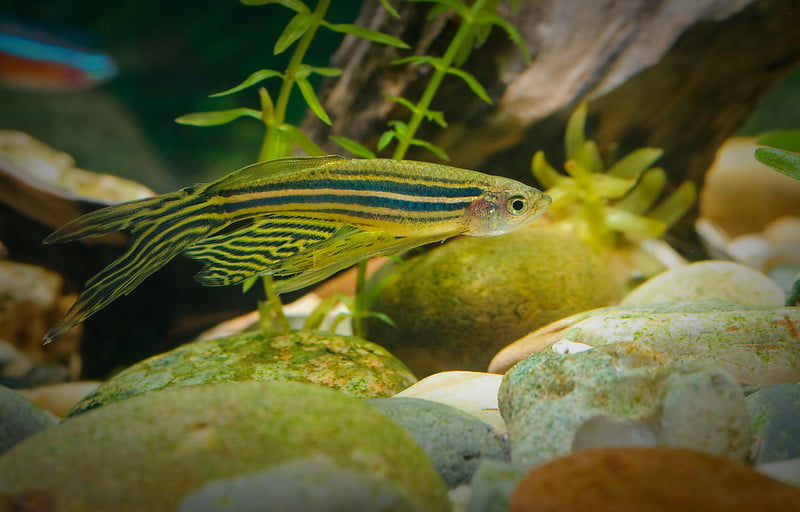
These active, schooling fish occupy the upper levels of the tank, making them perfect companions. Their quick movements keep them safe from the crayfish’s claws.
| Common/Market Names | Zebrafish, Striped Danio |
| Price Range | $2 – $5 |
| Care Level | Easy |
| Behavior | Active, schooling |
| Life Span | 2-3 years |
| Max Size | 2 inches |
3. Mollies
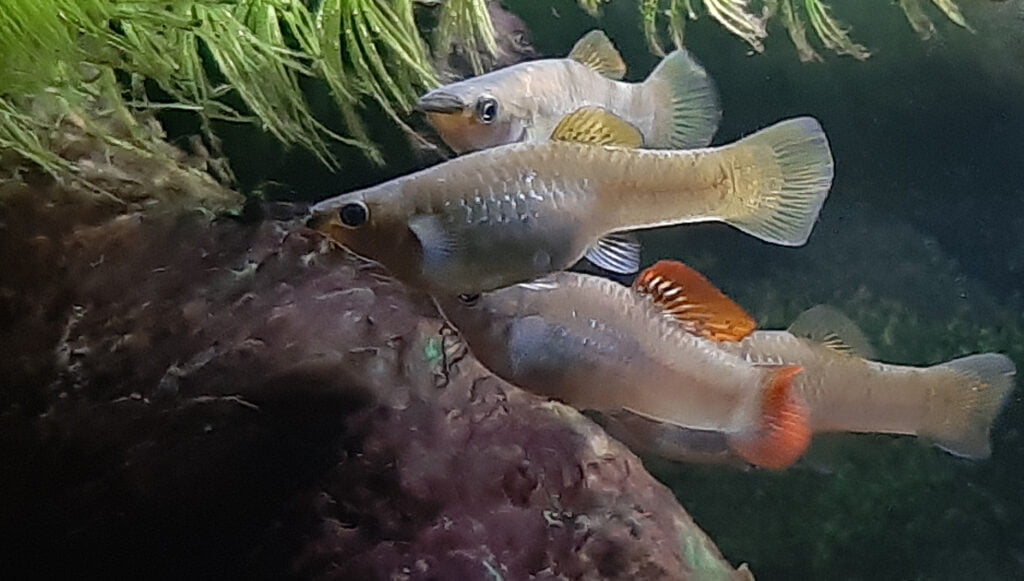
Mollies are hardy and adaptable, making them great tank mates. They’re peaceful and spend most of their time in the middle to upper parts of the tank.
| Common/Market Names | Black Molly, Sailfin Molly |
| Price Range | $3 – $8 |
| Care Level | Easy |
| Behavior | Peaceful, active |
| Life Span | 3-5 years |
| Max Size | 3-4 inches |
4. Corydoras Catfish
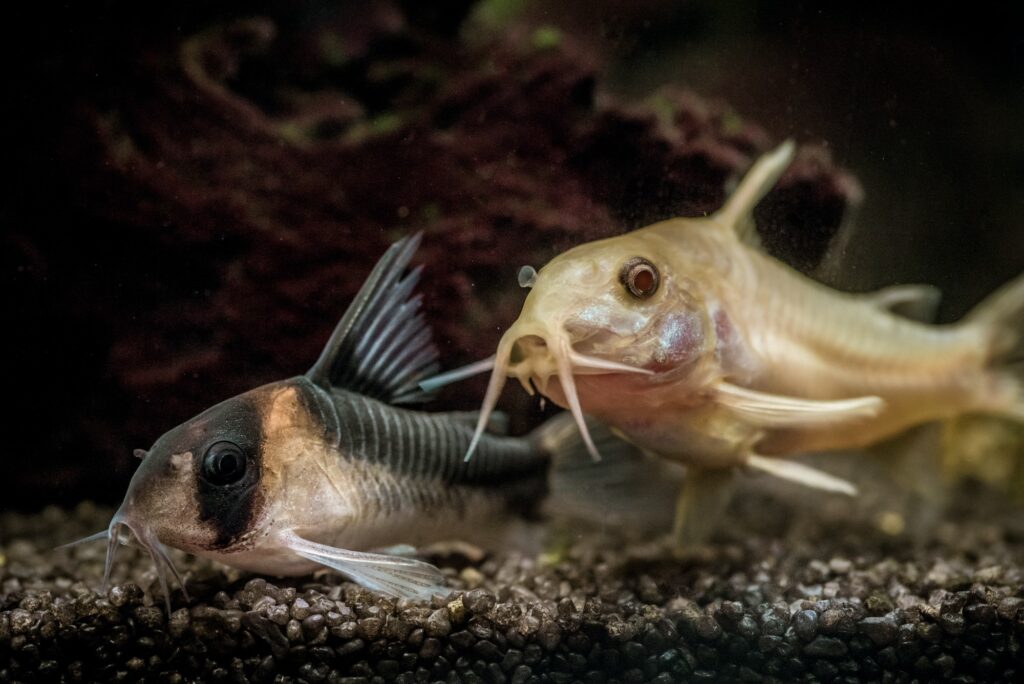
These small, armored catfish are bottom-dwellers but are quick enough to avoid confrontations. They’re peaceful and help keep the substrate clean.
| Common/Market Names | Cory Catfish, Armored Catfish |
| Price Range | $4 – $10 |
| Care Level | Easy |
| Behavior | Peaceful, social |
| Life Span | 3-5 years |
| Max Size | 2-3 inches |
5. Cherry Barb
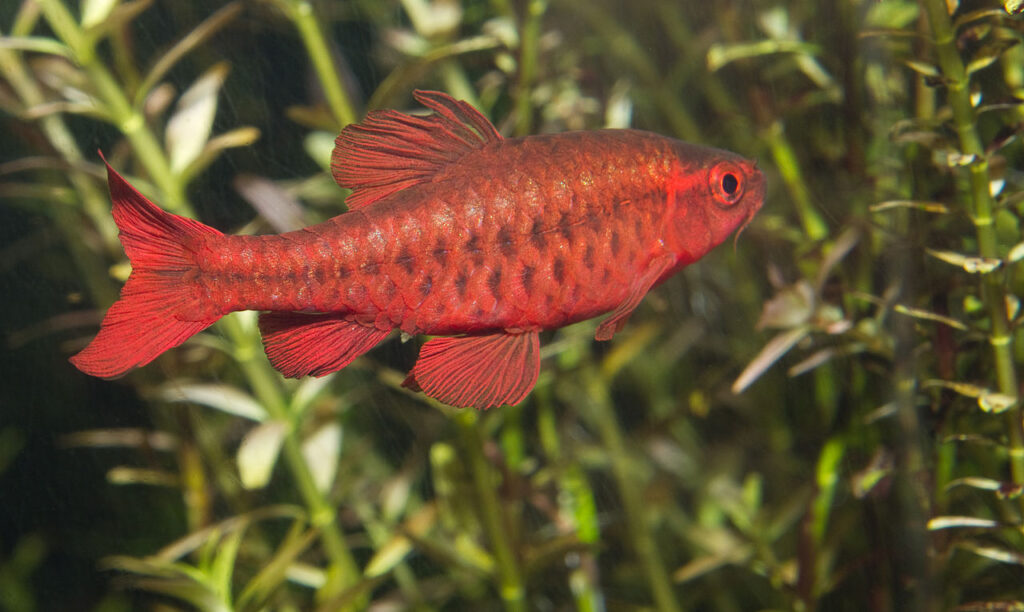
Cherry Barbs are colorful, active fish that add visual interest to the tank. They’re fast swimmers and usually occupy the middle levels of the aquarium.
| Common/Market Names | Ruby Barb |
| Price Range | $3 – $6 |
| Care Level | Easy |
| Behavior | Peaceful, schooling |
| Life Span | 4-6 years |
| Max Size | 2 inches |
6. Guppies
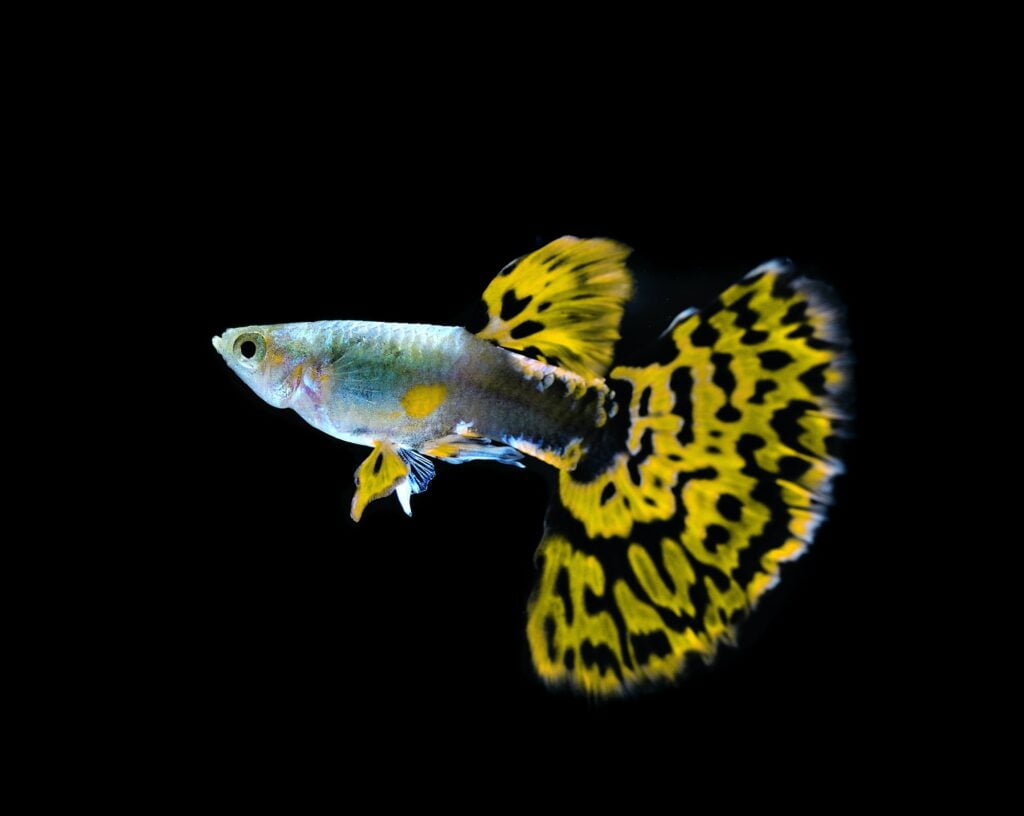
Guppies are small, colorful, and quick, making them suitable tank mates. They breed easily, providing occasional treats for the crayfish without decimating the population.
| Common/Market Names | Millionfish, Rainbow fish |
| Price Range | $1 – $5 |
| Care Level | Easy |
| Behavior | Peaceful, active |
| Life Span | 1-3 years |
| Max Size | 1-2 inches |
7. Kuhli Loach
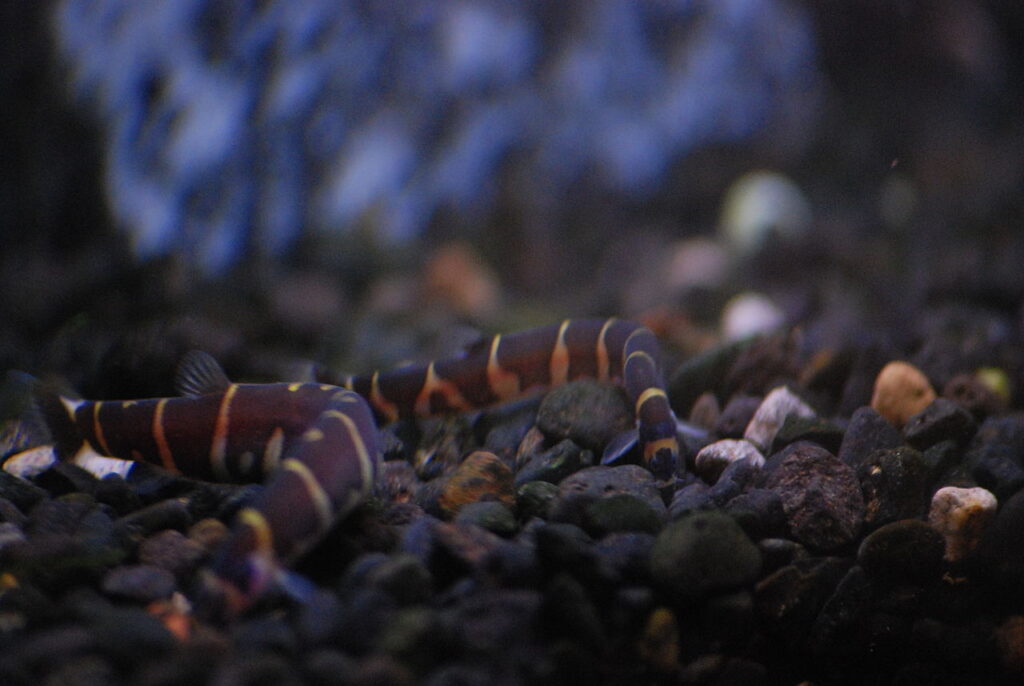
These unique, eel-like fish are bottom-dwellers but are quick and nocturnal. They can share hiding spots with the crayfish without conflict.
| Common/Market Names | Coolie Loach, Leopard Loach |
| Price Range | $3 – $8 |
| Care Level | Easy to Moderate |
| Behavior | Peaceful, shy |
| Life Span | 10 years |
| Max Size | 3-4 inches |
8. Rosy Barb
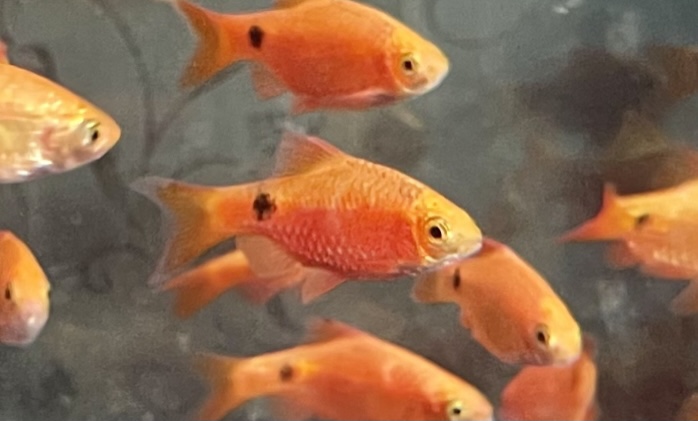
Rosy Barbs are active and hardy fish that add a splash of color to the tank. They’re fast swimmers and generally stay in the middle to upper levels.
| Common/Market Names | Red Barb |
| Price Range | $3 – $7 |
| Care Level | Easy |
| Behavior | Semi-aggressive, schooling |
| Life Span | 5 years |
| Max Size | 4-6 inches |
9. Platy
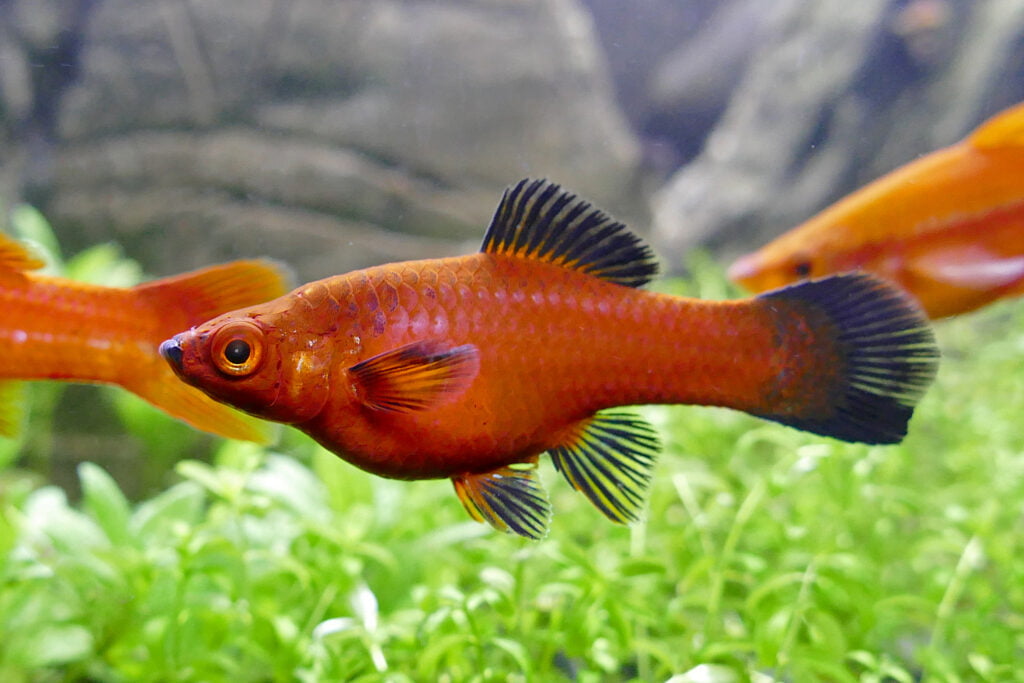
Platies are peaceful, colorful fish that are easy to care for. They’re active swimmers and occupy the middle levels of the tank.
| Common/Market Names | Moonfish, Variatus |
| Price Range | $2 – $5 |
| Care Level | Easy |
| Behavior | Peaceful, active |
| Life Span | 3-5 years |
| Max Size | 2-3 inches |
10. White Cloud Mountain Minnow
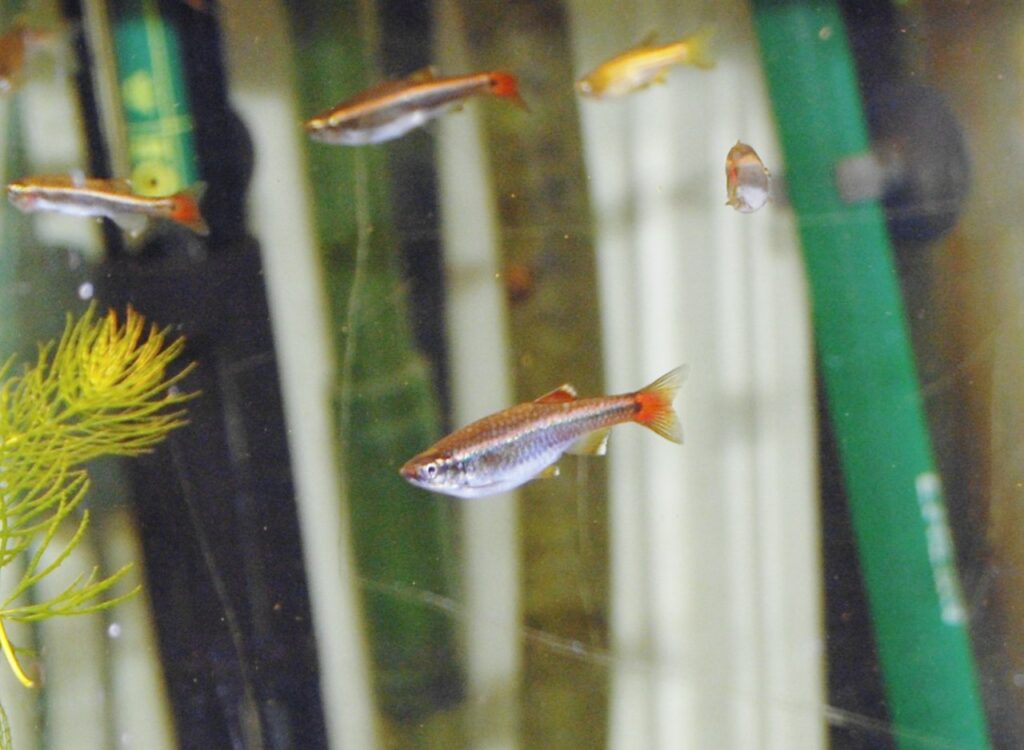
These small, hardy fish are excellent tank mates due to their peaceful nature and preference for cooler water, similar to the Electric Blue Crayfish.
| Common/Market Names | White Cloud, Chinese Danio |
| Price Range | $2 – $4 |
| Care Level | Easy |
| Behavior | Peaceful, schooling |
| Life Span | 3-5 years |
| Max Size | 1.5 inches |
Each of these fish brings its own unique characteristics to the aquarium, creating a diverse and interesting community that can coexist peacefully with the Electric Blue Crayfish.
FAQs about Electric Blue Crayfish
How often do Electric Blue Crayfish molt?
These crayfish typically molt every 3-4 months, but younger ones may molt more frequently as they grow. During this time, they’re vulnerable and may hide.
Can Electric Blue Crayfish live in outdoor ponds?
They can live in outdoor ponds in warm climates, but it’s not recommended as they may escape or become invasive. They’re best kept in controlled aquarium environments.
Do these crayfish need special lighting?
Standard aquarium lighting is fine. They don’t have specific light requirements, but a regular day-night cycle helps maintain their natural behavior.
How can I tell if my Electric Blue Crayfish is stressed?
Signs of stress include hiding more than usual, loss of appetite, and a dull coloration. Ensure water quality is good and the tank has plenty of hiding spots.
Are there any plants that can survive with these crayfish?
Hardy plants like Java Fern, Anubias, and large Amazon Swords may survive. However, these crayfish often uproot or eat plants, so artificial plants are a safer choice.
Can Electric Blue Crayfish live with other crayfish species?
It’s generally not recommended to keep different crayfish species together, as they may fight or interbreed, potentially losing their unique coloration in offspring.
How do I acclimate my new Electric Blue Crayfish to its tank?
Float the bag in the tank for 15-20 minutes to equalize temperature, then slowly add tank water to the bag over 30 minutes before gently releasing the crayfish.
What should I do if my crayfish loses a claw?
Don’t worry, crayfish can regrow lost limbs. Ensure good water quality and proper nutrition to support regeneration, which may take several molts.
Can Electric Blue Crayfish climb out of tanks?
Yes, they’re excellent climbers. Ensure your tank has a secure, tight-fitting lid to prevent escapes.
How do I feed my Electric Blue Crayfish when it’s molting?
During molting, crayfish usually don’t eat. Once they’ve hardened their new shell (about 24-48 hours), you can resume normal feeding.